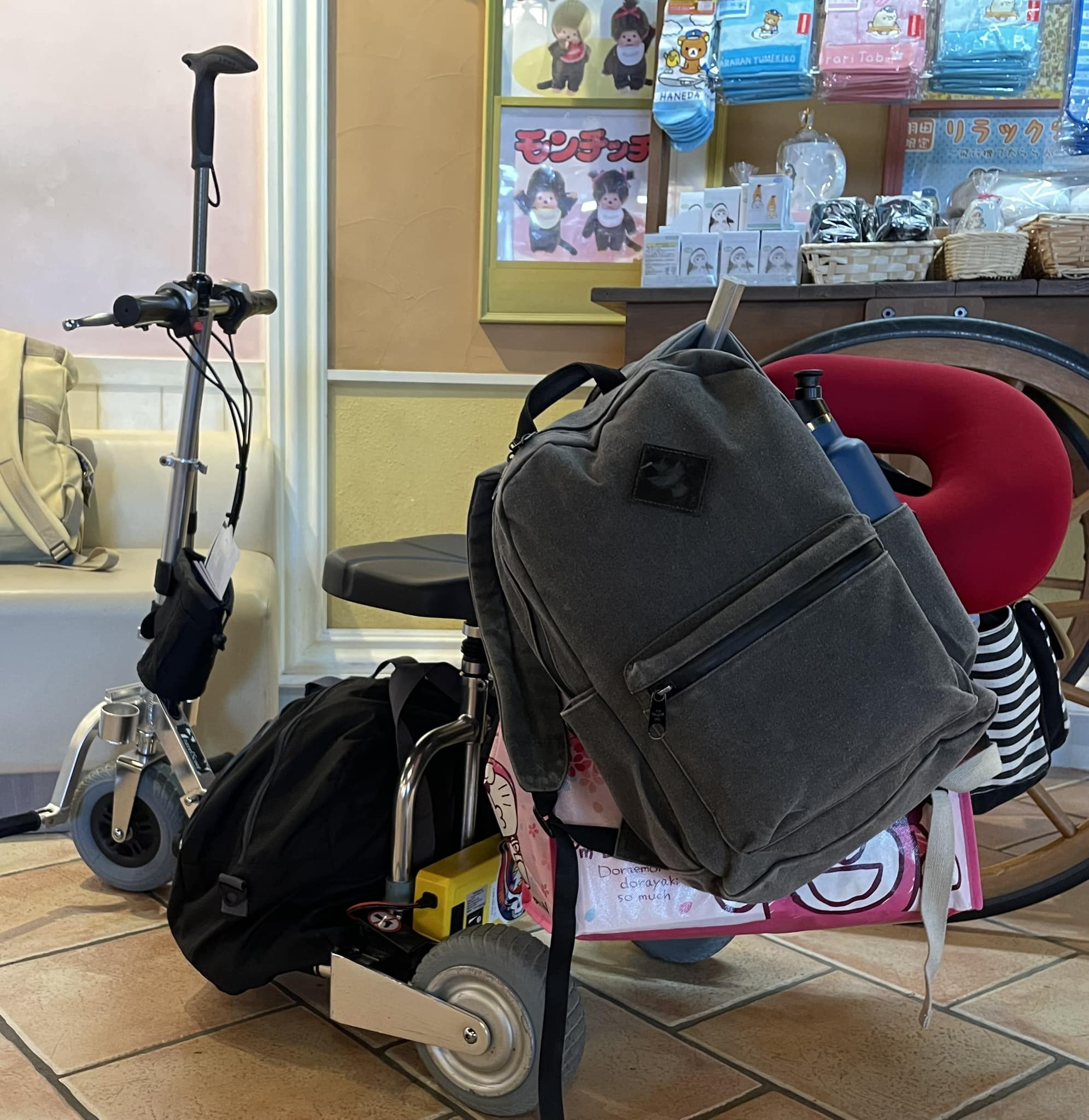
Arrival at the airport
1. Check-in
- Remain seated during check-in. This allows the agent to recognize that you have a walking disability without further discussion.
- It is not necessary to fold and pack your TravelScoot. We recommend riding it to the gate.
- Stack any spare batteries on top of your main battery in plain sight. Do not place batteries in your luggage.

2. At the gate
- Stay within the gate agent's field of vision. Passengers with disabilities receive priority boarding.
3. Boarding the plane
- Record a video of your scooter before boarding in case of damage during transport.
- Batteries must be removed and carried onboard, ideally, in our battery bag.
- Remove the battery, use the Travel Set bag, and lower the handlebars to the lowest setting.
- Do not fold or bag the scooter — separated parts may be lost or damaged.
4. After Landing
- Remain on the plane until your scooter is returned or you're taken to baggage claim by wheelchair.
- If your scooter is missing, ask the flight attendant for assistance right away.
5. Assess your scooter for damage
- Inspect your TravelScoot immediately upon retrieval for any damage.
- If needed, report the issue right away. A third-party service will handle repairs at no cost to you.
Alternative Method: Pack your suitcase
For added peace of mind, consider packing your scooter in a suitcase. While it’s less convenient, it’s the safest way to protect your device during air travel.
Special Allowance for Scooters
Scooters are permitted batteries of up to 300Wh, with an allowance for one spare up to 300Wh or two up to 160Wh. Batteries must meet UN38.3 standards and display certification.
Useful Documents
Misunderstandings may occur at airports. We recommend printing out relevant lithium-ion battery documents from our battery documentation page.
Airline Policies
Click below to view airline-specific scooter policies.


